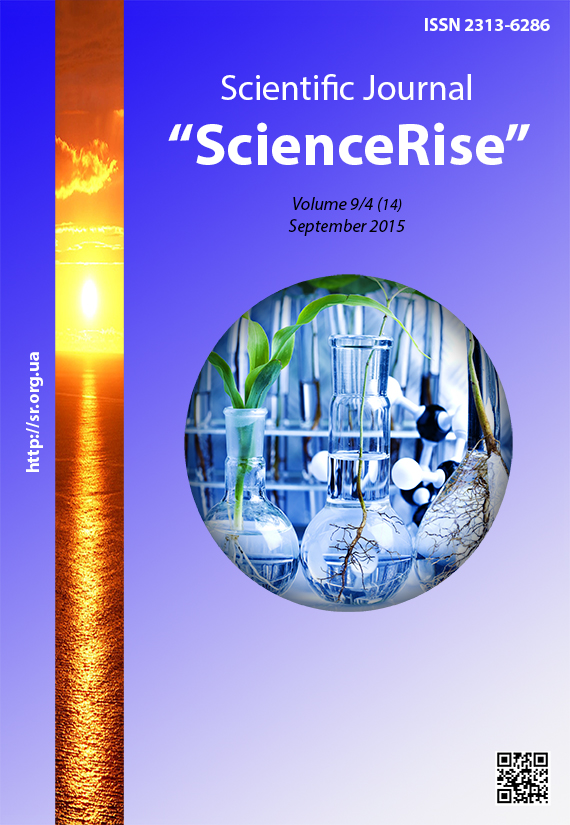Process optimization of potato microclonal reproduction
DOI:
https://doi.org/10.15587/2313-8416.2015.49342Keywords:
humic acids, stalk, potatoes, cultuvation, regeneration, reproduction, sprout, culture medium, plant hormonesAbstract
It is described an optimization method of potato planting material reproduction process by adding physiologically active forms of humus acids to the MS nutrient medium. It is determined that it is appropriate to use fulvates that do not lose their physiological activity after heat treatment for reduction of cultivation terms in vitro and accelerate the regeneration of microplants
References
Guseva, K. J., Myakisheva, A. P., Tavartkiladze, A. K. (2013). In vitro Rooting of potato varieties (Solanum tuberosum L.). News Altaiskogo state University, 1 (3 (79)), 56–60.
Krupa, O. M., Trinko, G. I., Bitter, O. A. (2010). Status and prospects of development of potato cultivation in the Lviv region. Lviv, 4–15.
Matichuk, V. M., Sauck, O. A., Kropiwnicki, P. B., Segeda, A. F. (2014). Peculiarities of examination of varieties of potatoes (Solanum tuberosum L.) for distinctness, uniformity and stability. Bulletin of INEU, 2 (42), 136–144.
Tesluk, P. S., Maliki, N. I., Vlasenko, M. Y. (2000). Protection of potato against pests and diseases. Seed potatoes.White Church, 137–138.
Didkovsky, T. P. (2009). The technological basis of production and application of humates for vegetable crops. Kharkiv, 10–22.
Gorovaya, A. S., Orlov, D. S., Shcherbenko, A. V. (1995). Humic substances. Kyiv: Naukova Dumka, 15–83.
Dragunov, S. S. (1980). Chemical characterization of humic acids and their physiological activity. Humic fertilizers. Theory and practice of their application, VII, 5–21.
Hristova, L. A. (1977). To the nature of the action of physiologically active humic substances on plants in experimental conditions. Humic fertilizers. Theory and practice of their application, 7, 3–15.
Roncal, G. A., Zhminko, V. A. (1968). Physiological activity of humic substances humus. Humic fertilizers. Theory and practice of their application, III, 80–87.
Batalin, G. A., Cogan, M. M., Makhno, L. Y. (1983). Membrane permeability to certain substances of humic nature and their contribution to physiological activity of a preparation of sodium humates. Humic fertilizers. Theory and practice of their application, IX, 117–121.
Gorovaya, A. S. (1968). The influence of physiologically active substances on the mitotic activity of meristematic cells, the condition of nucleic acids and growth processes in plants. Kyiv, 23.
Okolelova, A. A. (1992). The nature and properties of fulvic acids. Soil science, 1, 65.
Downloads
Published
Issue
Section
License
Copyright (c) 2015 Тетяна Павлівна Бортнік, Михайло Йосипович Шевчук, Ірина Вікторівна Сеньків

This work is licensed under a Creative Commons Attribution 4.0 International License.
Our journal abides by the Creative Commons CC BY copyright rights and permissions for open access journals.
Authors, who are published in this journal, agree to the following conditions:
1. The authors reserve the right to authorship of the work and pass the first publication right of this work to the journal under the terms of a Creative Commons CC BY, which allows others to freely distribute the published research with the obligatory reference to the authors of the original work and the first publication of the work in this journal.
2. The authors have the right to conclude separate supplement agreements that relate to non-exclusive work distribution in the form in which it has been published by the journal (for example, to upload the work to the online storage of the journal or publish it as part of a monograph), provided that the reference to the first publication of the work in this journal is included.

